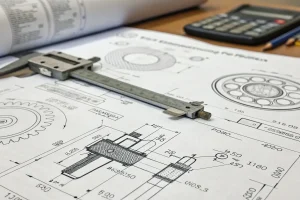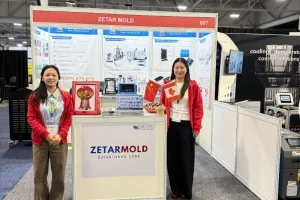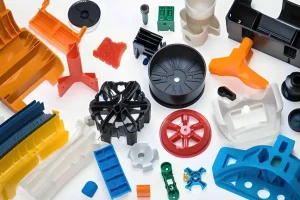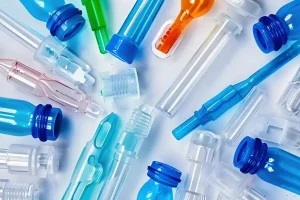In recent years, 3D printing and injection molding have been compared in the plastics manufacturing industry, and there is even talk that 3D printing is the end of injection molding.
With the increasing maturity of 3D development, will 3D printing eventually replace plastic injection molding?
For mould manufacturers, the competitiveness of the two is one of their main concerns. But in reality, the two technologies have their advantages, and sometimes they can coexist or even complement each other.
In this blog post, we’ll explore both sides of the debate and try to conclude.

Why can’t 3D printing replace plastic injection molding?
Because of the molding characteristics of 3D printing, the processed material is not tough at all, in other words, it is very brittle and unbearable.
Modified nylon printing may be able to get a certain strength, but nylon can not polish the surface polishing, simply can not be used for some of the appearances of the product processing requirements.
3D printing is the use of layer-by-layer printing (layering process) to construct objects, processing is more difficult, molding efficiency is low, generally used for the production of fine products.
In addition, industrial-grade 3D printers are highly accurate, but the requirements for powder or solution are very high, and consumables are extremely expensive.

So now the conclusion is very obvious, the advantage of 3D printing is in the manufacturing of single non-standard products, you can use the characteristics of rapid prototyping to make some engineering prototypes, and so on.
But once the need for mass production, 3D printing existing mainstream materials will become hard to meet the requirements of use, even with high-performance raw material, will be no cost-effective.
And for the traditional mold manufacturing, as long as the product comes up, the cost is not much worse than 3D printing.
Therefore, from the material and time, cost, 3D printing is just a new molding technology, but it is not possible to replace plastic injection molding services.

Advantages and disadvantages of 3D printing
Advantages of 3D printing
The advantages of 3D printing are that it does not require molds, has fewer molding constraints, and can take full advantage of design and topology optimization to structurally optimize the product and achieve equal or better mechanical performance with less material.
The cost of 3D printing has very little correlation with the complexity of the part, for example, a complex part can cost geometrically more when using injection molding, while 3D printing does not increase the cost geometrically, and also allows multiple parts to be integrated into a whole and printed out in one piece, reducing assembly time later.
Since no molds are required, 3D printing has better support for iteration. In addition, 3D printing can be produced on demand, making as many as needed, reducing inventory pressure, and making production more flexible.
Disadvantages of 3D printing
The disadvantage of 3D printing is that the speed of mass production is not fast enough, when the number of production exceeds a certain amount, the efficiency of 3D printing becomes inefficient.
If we compare 3D printing and injection molding to runners, 3D printing is a sprinter and injection molding is a long-distance runner.
Secondly, the variety of materials that can be used is much less than injection molding.
Third, the surface quality is average and often requires post-processing to improve the surface quality.

3D VS Injection Molding
In many cases, different technologies are used for different stages of mold manufacturing.
For example, 3D printing is often preferred for prototyping because it is simple, portable, and has very low start-up costs.
Injection molding, on the other hand, is often the process of choice for high-volume end-use parts because it is fast and highly repeatable.
3D printing technology serves the R&D phase, while injection molding is responsible for production.

What is the difference between 3D printing and injection molding?
1. 3D printing technology and injection molding principle comparison
3D printing technology is the technology of the last century, the market of this century.
3D printing technology is a technology-based on rapid prototyping technology, based on digital model files, using powdered metal, plastic using powdered metal/plastic, and other bondable materials to construct objects by printing layer by layer.
3D printing is a production method that uses the 3D printer to build objects based on computer-generated model files using raw material and one of many different processes, such as FDM (Fused Deposition Modeling), Resin (SLS, DLP, SLA), PolyJet, among others.
The injection molding technology is based on the method of injecting a completely molten plastic molten material into a mold cavity at a certain temperature by mixing it with a screw, injecting it into the mold cavity at high pressure, and then curing it after cooling to obtain a molded product.

2. Comparison of 3D printing technology and injection molding production mode
Injection molding requires the selection of injection molds, which can produce standardized products at a low cost and on a large scale.
Quality control and inspection after each part is removed from the injection molding machine and has cooled, it must be checked for size and shape to make sure it is within spec.
Therefore, for traditional high-volume, large-scale manufacturing using injection molding technology is better. Additive manufacturing technology should be viewed as a complement rather than a competitor to injection molding.
And 3d printing technology does not require traditional tools, fixtures machine tools, etc., relying on computer digital technology, the need for the status quo three-dimensional model, quickly and directly into the physical model.
Injection-molded parts can’t always be 3D printed, and 3D printed parts can’t always be injection molded, so it’s important to have engineers in the process that can recognize the difference and what tool should be used to make a part.
Therefore, 3d printing technology is more suitable for personalized, diversified product manufacturing.

3. 3D printing technology and injection molding technology production cost comparison
We all know that injection molding technology using raw materials is relatively easy to obtain, can be large-scale standardized production, can achieve a reduction in the cost of a single piece.
While 3D printing technology requires 3D printing materials that are more difficult to obtain and very expensive. But there is still a great prospect of 3D printing technology saving the link is to modify the prototype link, which only needs a CAD model, and will not incur any costs.
4. 3D printing technology and injection molding production quality comparison
Using high 3D printers will know that the printed parts do not have the same physical properties.
Injection molding technology, on the other hand, manufactures parts that not only have more physical properties than 3D printing technology but also produce plastic parts with more surface finish and more resistant products, which 3D printing technology does not have.

5.3D printing technology and injection molding application field comparison
In the current market, the injection molding process can realize the mass production of manufacturing an item in the market. Injection-molded parts are made from homogenous material that cures as a single part. No layering, more suitable for batch processing of a certain part, standardized high volume production with same quality, such as the production of toys, aviation, aerospace, electronics, machinery, and other fields.
3D printing as the emergence of new technologies, through digital computer technology, convert model file into a physical object, it can be 3D printing materials, made into the need for models, can effectively shorten the processing time, widely used in children’s education creators, architectural design and even medical industry used to benefit humanity.

Summarize
From the advantages and disadvantages of both sides, the two sides are currently in a complementary stage, some small batch production has been a lot in the use of the 3D printing process.
Manufacturers are refining their 3D printing processes to improve the performance of this manufacturing process. And in the future, with the continuous progress of 3D printing technology, will continue to grab some market from injection molding. But to replace the injection molding, a short period is still relatively difficult.
When the 3D printing speed is fast enough, supports enough materials, the quality of printed parts is better, the injection molding process may have a relatively large impact.










